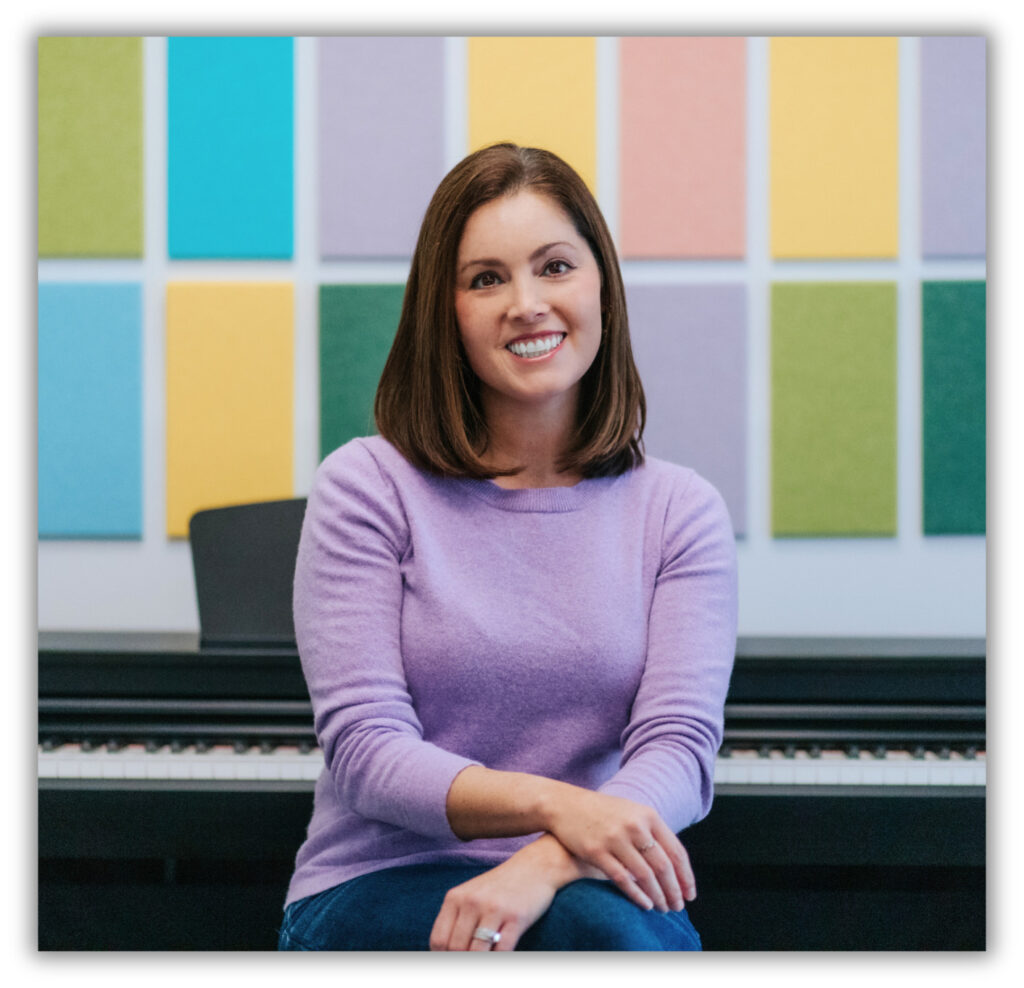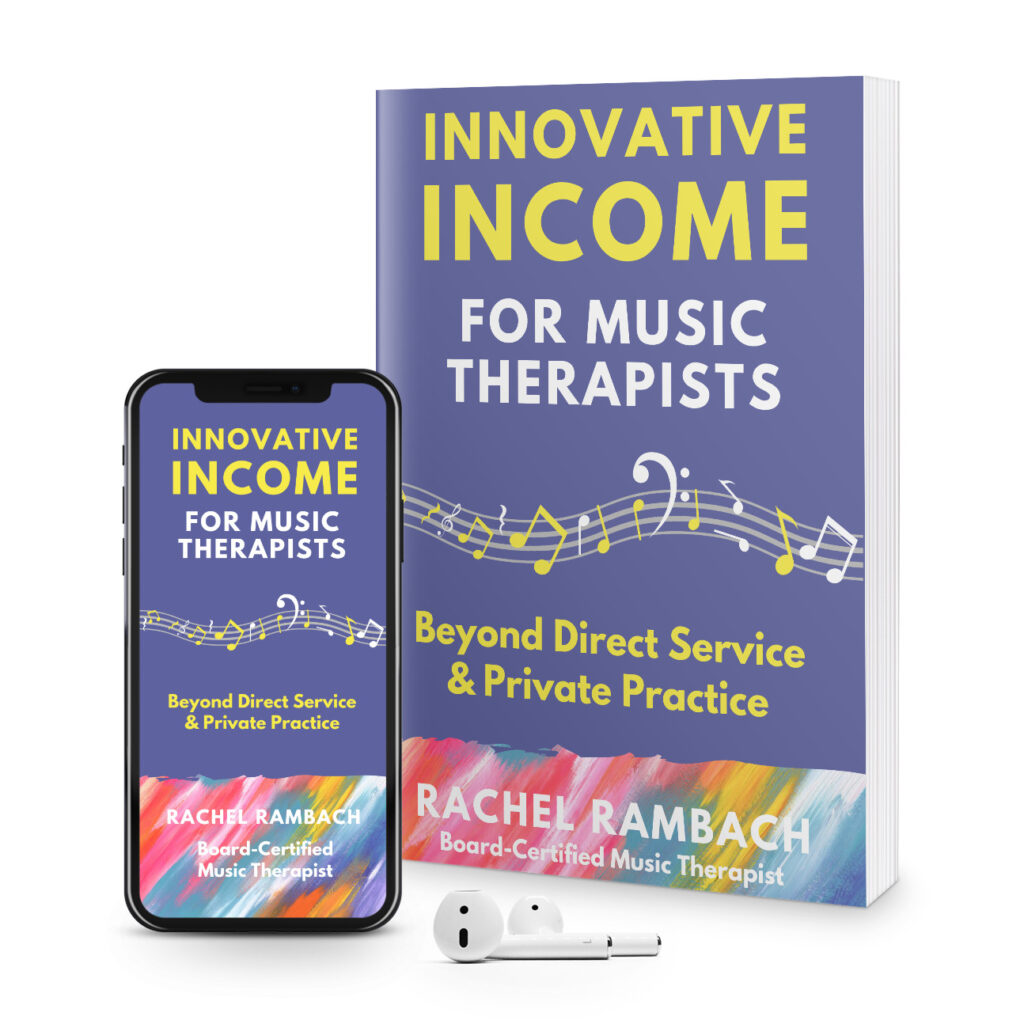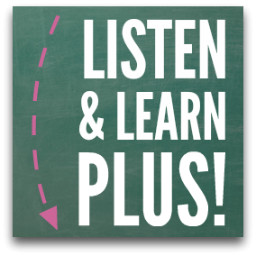by Rachel | Uncategorized
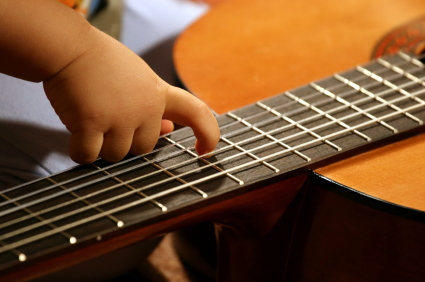
For most of my students, the guitar is an object of fascination. They want to hear it, touch it, and most of all, they want to play it. But as much as many of them want to strum those strings, there’s usually a bit of apprehension before they go for it.
During a music therapy session last week, I found myself really wishing I had a fun and inviting tune to help acclimate that particular student to strumming the guitar. Luckily, now I do!

In the song, I mention several different ways to strum: with your fingers, with a pick, up and down. I also sing about joining in “loud and strong” because lots of my kiddos have a tendency to barely graze the strings, which results in almost no sound at all.
The guitar is essential to most of my music therapy sessions, and I always want to ensure that it does not become a barrier between my student and myself. How do you introduce the guitar to your kiddos and help them feel comfortable strummin’ away?
by Rachel | Uncategorized
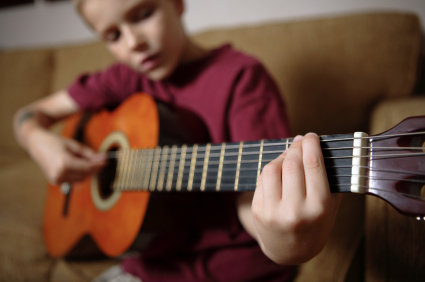
This is the second of a two-part article series by guest author Aaron Schulman. You can read part one here.
In the previous article of this series, we discussed the importance of music in developing cognitive abilities in young children. Now let’s take a look at some practical ways or methods to implement the process in your own home. Whether your goal is to simply enrich your child’s learning abilities with music, piano or guitar education, or whether you aspire to help him or her become the best beginner acoustic guitar player he or she can be, these ideas can help set a normal and quality foundation.
The age of the child is of great importance to how you teach a musical instrument. As a child grows, so will his or her attention span. Studies show that simple instruments, such as a keyboard or hand drum, can be played by nearly any child who can follow simple directions. However, a very young child would not have organized lessons, nor would the teaching last long. It is important that the first lessons be fun and stimulate your child’s interest in music.
As the child matures, lessons can last longer and become more structured. A rewards system, such as short breaks with a special, healthy snack in the middle and end of the lesson, may work well with younger children. For older children, they will be able to see the progress they are making as a reward in and of itself. Intrinsic motivation can be built up as a child begins to get satisfaction from the sheer process and enjoyment of learning music.
But for a child at any age, time spent with a parent learning about an instrument is valuable. For example, you may show a drum to a one year old, and teach them how to say the word drum. This will help develop interpersonal and language skills. As the child learns to tap out a rhythm, they are learning musical and kinesthetic (body movement) skills. For an older child, figuring out tempo and patterns and learning to read sheet music can help develop mathematical skills and self-confidence.
Make sure to encourage your child in his or her process, and remember that each child is an individual who learns his or her own way. Even siblings will not learn at the same pace (so be sure to adjust the details of the learning process to suit individual personalities). A younger child may learn a certain instrument more quickly than an older child. One twin may have an ear for rhythm while the other does not. That’s okay and should be expected as the “norm”. Each child will have differing strengths in each of the seven Multiple Intelligences (learning styles.)
As you may recall from the first part of this series, these seven areas are:
- Linguistic (verbal and written communication)
- Logical-mathematical (logical analytical skills)
- Visual (spatial-creative thinking in abstract ways or dimensions)
- Bodily-kinesthetic (using coordinated body movements to accomplish tasks)
- Musical (musical talent and ability)
- Interpersonal (development ability to work well with others)
- Intrapersonal (development of internally oriented tendencies)
A child’s intelligence cannot be measured by focusing on one single area, rather all areas and learning styles must be considered for a complete assessment. And, don’t forget that it is more important to stimulate your child’s brain development with structured variations and challenges in the lessons in music rather than to simply make sure that the child perfects every lesson within a specified time.
The choice of instrument is important as well. Your toddler or young child will not be able to handle a full-sized guitar or even a ¾ size guitar with effectiveness (it may cause more frustration at too early an age as well). With a younger child, a keyboard or piano is a good place to start. As the child grows, he or she may “graduate” to a child-sized mini guitar. The lessons they learn on these smaller instruments will follow them into adulthood and perhaps even promote a lifelong passion for music.
All in all, even if your youngster doesn’t grow up to be a modern day Mozart, you can rest assured that the musical training he or she received as a child helped develop learning styles and skills that will be utilized throughout life.
About the Author: Aaron Schulman developed a passion for playing acoustic guitars over twenty years ago, and continues to enjoy playing, teaching, studying the guitar and writing guitar reviews, like a recent one on the Baby Taylor. Aaron has made it a personal goal to help others find their own “fit” in an acoustic guitar within their personal budget and goals. You can read more reviews, including one on the Taylor 110 e at Strumviews.com.
by Rachel | Uncategorized
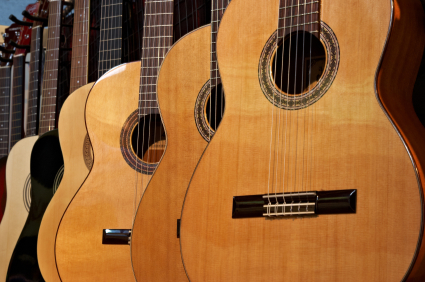
This is the first of a two-part article series by guest author Aaron Schulman.
Have you ever heard someone say, “I’m a hands-on learner,” or, “I have to see it to understand it”? Developmental psychologist Howard Gardner tells us that there are (at least) 7 Multiple Intelligences (learning styles) that affect the way people learn. He theorizes that people develop intellectually within these seven different areas and all cognitive development must be measured using each area. Whether you are the best acoustic guitar player in your town or have trouble holding a tune in a bucket, your children can benefit from music education, building up and growing their different learning style or multiple intelligence capabilities. These Multiple Intelligences (per Gardner) are as follows:
• Linguistic
• Logical-mathematical
• Spatial
• Bodily-kinesthetic
• Musical
• Interpersonal
• Intrapersonal
Linguistic style means using written and oral language to learn. People with strength in this area may learn by reading, note-taking, and listening. Logical-mathematical learners analyze problems. These are people who tend to look at each challenge logically and try to solve it with rational problem-solving skills. Spatial intelligence is using visual and creative thinking in abstract ways (including visual and dimensional learning). Bodily-kinesthetic learning is the ability to coordinate your mind and body to achieve a goal (great athletes could have higher core competencies in these areas). The musical learning style is expressed as ability in patterns, performance, and composition with music literacy. Interpersonal intelligence is the capability of working with and understanding others. Finally, intrapersonal intelligence is having an acute understanding of oneself that sets a standard of living (solid self-awareness skills including strengths and weaknesses).
Each person will develop cognitively within these seven styles of learning. Individuals will have varying degrees of strength in each area. Even children from the same family will invariably have different personalities and learning styles. From many other psychological studies, we know that children’s cognitive development increases at the greatest rate from birth to age seven; and from there it continues to increase more gradually. We also know that we can significantly affect children’s rate of learning with varying stimuli (challenging their development through different learning modalities listed above).
You may be saying to yourself right now, wait a minute – I thought this was an article about playing the acoustic guitar? It is. As it turns out, musical ability and cognitive growth have a very strong bond. One particular stimulus you can use to help your child grow in almost every one of the multiple intelligences is music. As a child learns to play an instrument, they must use several different areas of the brain and several modalities of cognitive learning will develop. In learning to read sheet music, discovering beat and tempo, and using body positioning to play an instrument properly, you can already begin to see a large platform of learning styles utilized.
Scientific studies have also shown that being educated in music leads to higher intelligence in spatial and mathematical development. Specifically, as a child learns patterns, rhythm and pitch, they are actually developing their logical-mathematical reasoning and processing. In teaching your child a musical instrument, you are really helping your child’s brain development in a more well-rounded approach; not to mention the great quality time it provides for parent and child.
(Check out http://serendip.brynmawr.edu/exchange/node/1869 For some great information on Dr. Gottfried Schlaug’s research on music students’ developing greater corpus callosum growth and activity. You will also find studies on what is called the Mozart effect on the development and enhancement of spatial memory for music students.)
Studies show that children are capable of developing rhythm and movement even before they are able to speak. In children as young as twelve months, scientists have noted a marked positive influence when a child listens to and explores music and instruments. Children who learn musical instruments before the age of 7 show a tendency to develop a larger, more robust corpus callosum (the neural network that connects both left and right halves of the brain and helps both halves of the brain to communicate). (See aforementioned website for further information on this study.)
Let’s get more practical:
We’ve discussed what music can do for children in general, but what can it specifically do for your child? For infants to young toddlers, music develops their musical and kinesthetic intelligences as they move their arms and legs to the sounds and discover rhythm. For children about three to seven years of age, learning to play a musical instrument helps develop the neural connections in the left and right brain hemispheres. Older children also benefit cognitively from learning musical instruments. Added to that, older children also develop interpersonal and intrapersonal communication skills when receiving lessons and spending quality time with others, especially a parent or other loved one.
All in all, the benefits your child will receive from learning to play an acoustic guitar or one of many other musical instruments will make it worth doing. And you as a parent will receive as much from the quality time you spend learning with and teaching your child.
Look for Part 2 of this series on Monday, December 19.
About the Author: Aaron Schulman is a husband, father, teacher, and experienced guitarist. He enjoys sharing what he has learned through Psychology education and his research into music, especially acoustic guitars, with his readers on his guitar review site, StrumViews.com. You can read more reviews like one on the Taylor 110e, or several other including Aaron’s “best acoustic guitar for under $1,000” series of reviews.
by Rachel | Uncategorized

No, this isn’t a lesson in zoology. “Elephants And Deer Grow Big Ears” is actually the sentence I teach my guitar students to help them memorize the order of strings (lowest to highest) on the guitar.
When I first started learning to play, I just memorized E-A-D-G-B-E. But in the middle of a 7-year-old student’s first lesson, I realized I was going to need to find a way to make it stick. So I came up with my sentence on the spot, wrote it down for my student, and have been using it ever since.
I was curious as to whether anyone else uses that same sentence, so I googled it. I didn’t come across my sentence, but I did find these:
- Every Ant Does Good Bad Everyday
- Elvis Always Dug Good Banana Eating
- Every Apple Does Good Being Eaten
- Every Athlete Does Good Before Events
- Every American Dog Growls Barks Eats
- Eat All Delicious Green Beans Everyday
How do you remember and/or teach the order of strings on the guitar? Some people go the opposite way, starting with the highest string. In either case, I’d be curious to hear other mnemonic devices for guitar. Please share yours in the comments!





